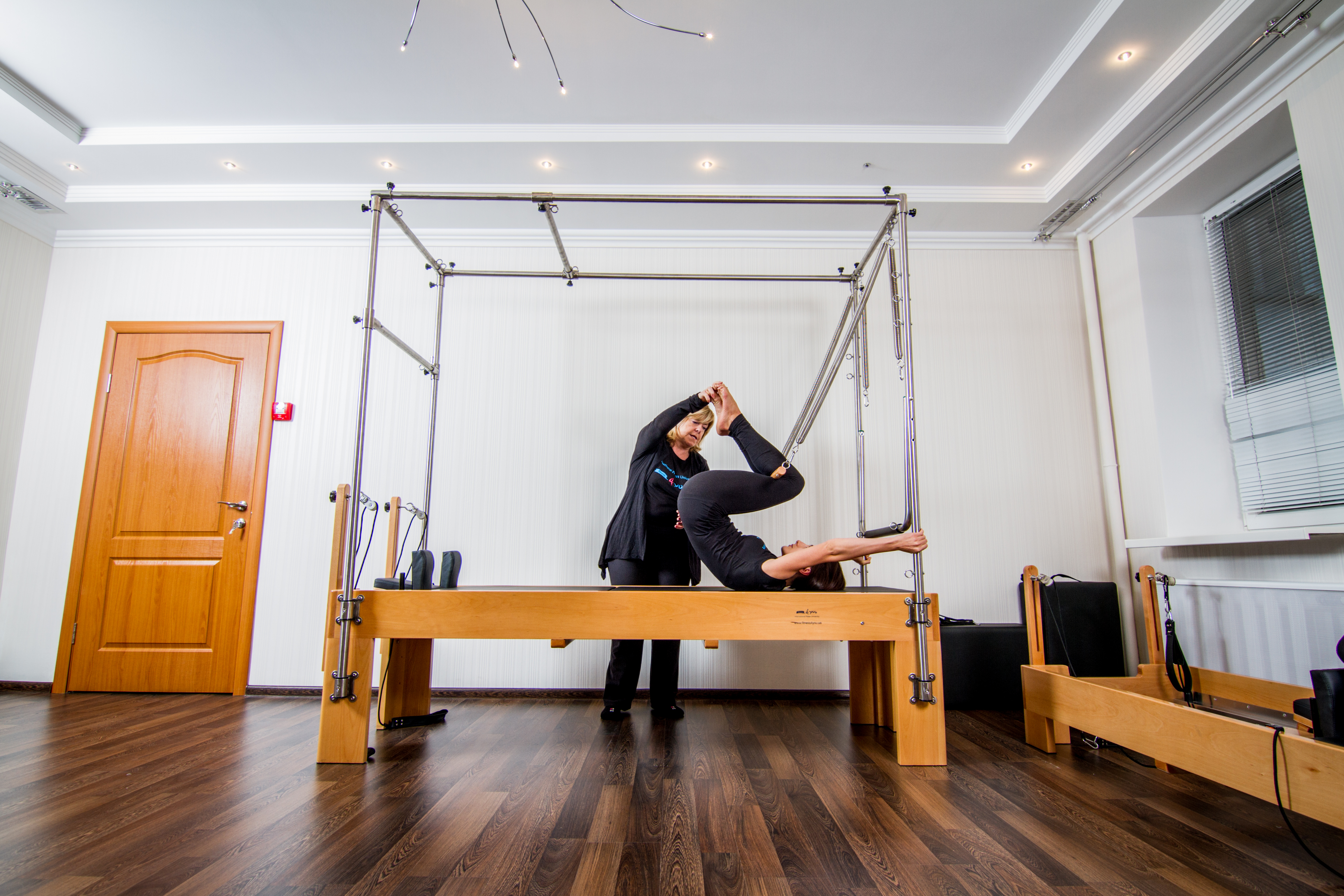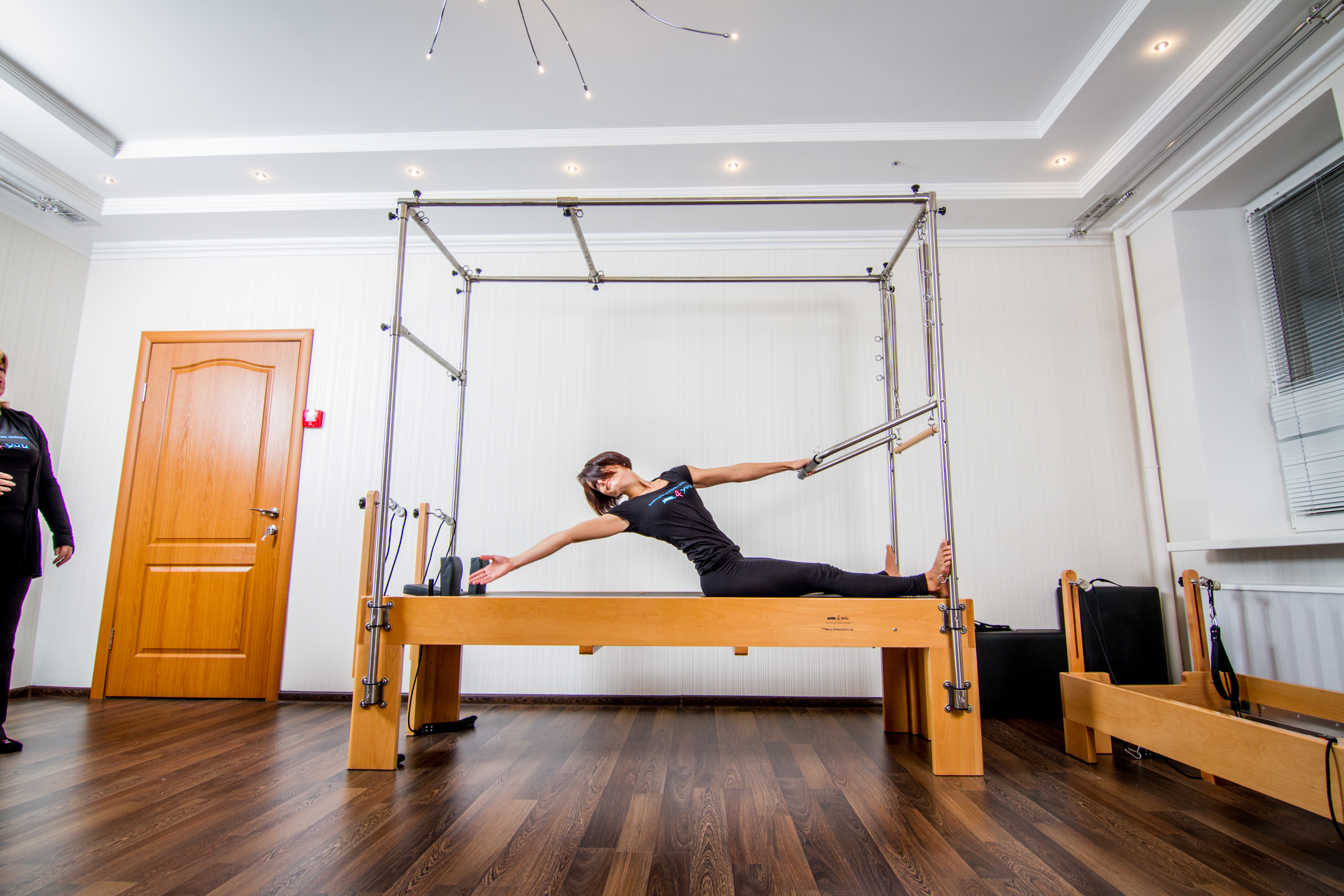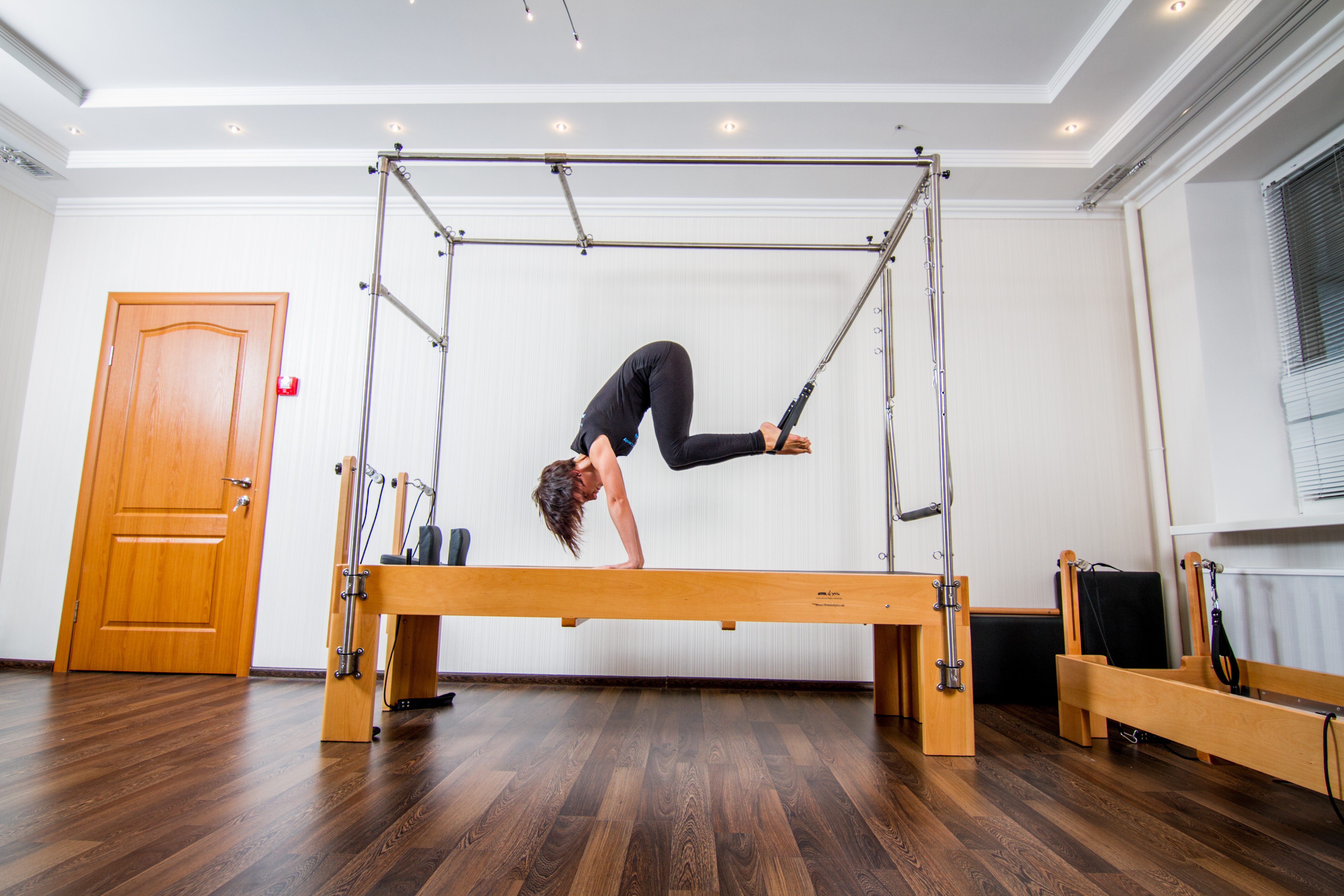
|
I want to ride my bicycle...
Niche or segmented group sessions are a great way to get members or clients with similar interests into a Pilates workout. Bikers, tennis players, skiers – the method can help any of them with their performance while decreasing the chance of injury.
Now, as length, flexibility and decreasing injury have become more important in many professional sports, the method has made a dramatic rise as an adjunct to strength and conditioning programs for many Pro male sports, including football, basketball, race-car driving and golf.
Cycling has been becoming increasingly popular as a sport, as an easy form of training and as a cheap form of commuting and transport.
Training for cycling has been traditionally very simple; the more miles the better! Whether they’re in the Spinning studio or riding on the road, cyclists are always searching for ways to improve their performance in the saddle. They try the latest training techniques, equipment and nutritional plans in an attempt to gain an edge. For any cyclist improving efficiency is key - the more power they can produce with less effort, the faster they can travel for longer. Clearly, the longer a cyclist is able to maintain good form on the bike, the more efficiently they will use their energy, and the further and faster they can go. But many don’t realize they can also reap benefits through a less obvious source — a Pilates exercise program.
Core conditioning is a BORING topic. When one’s flipping through cycling magazines those are the first articles to be skipped over. They don't have that immediate effect on the cycling performance that cyclists are looking for. They’d rather read about 6 simple shortcuts to time trial like Cancellara.
One of the most vital skills for riding with others is the ability to hold your line while you are doing other tasks, such as¬¬ reaching for a drink bottle, signalling, scanning behind or even just ringing your bell. For those of us who just want to hold a steady line in traffic, the ability to remain centred and allow the upper body to turn or move without throwing the whole position out of alignment is vital.
Beginners and experienced riders alike struggle not to veer when doing these things, despite their best efforts. The problem often lies in their core strength and flexibility, rather than their experience on the bike. The good news is that one of the easiest ways to solve this problem is by incorporating Pilates into your life.
Pilates conditioning, whether performed on the mat or on specialized equipment such as the reformer, involves a series of dynamic movements designed to strengthen the body’s core. The core muscles are the deep muscles which support your trunk and can’t be activated by simply sucking your tummy in. So forget the flashy sixpacks which are formed by the superficial rectus abdominis muscles. You want to work the deeper muscles of the pelvic floor and the transversus abdominis.
As a simple experiment, next time you need to reach for your bottle or look over your shoulder, consciously engage your core muscles first. You’ll be surprised at the improvement in stability.

The key to Pilates is that each movement requires proper alignment of the pelvis, which in turn requires subtle torso movements that help strengthen the core body muscles important to cycling: transverse abdominis, pelvic floor and multifidus. Additional benefits include improved muscle flexibility, posture, and balance. No, not as exciting as having a sprint like Renshaw, but important stuff.
Pilates is all about strength and flexibility of the body by focusing on the core muscle groups. As cyclists tend to have highly-developed legs, they don’t pay much attention upper body muscular conditioning. Most of them think of “upper body conditioning” as weight lifting and adding unwanted bulk. Pilates doesn’t do this.
In other words, cyclists tend to have highly-developed legs, but frequently without the same sort of muscular conditioning of the upper body. That problem becomes particularly pronounced when fatigue sets in.
Have you noticed the body language of a tired cyclist? The chest drops so that the neck has bend unnaturally to hold the head up, and all the weight falls into the front the arms, the deltoids, biceps and forearms.
Наблюдали ли вы когда-либо за тем, что говорит вам тело утомленного велосипедиста? Грудная клетка проваливается, шее приходится неестественно изгибаться, чтобы поддерживать голову, вес тела полностью переносится на руки, дельты, бицепсы и предплечья.
It is easy to spot a tiring cyclist - as fatigue sets in their effort becomes less and less efficient, and as they pedal, their bodies will start to roll from side to side on their bikes. In contrast, riders who are still moving efficiently will have their legs turning the pedals smoothly whilst their head, shoulders and body remain still and secure, in doing so they are wasting less energy to propel the bike.
Pilates helps you become more self aware with what each part of your body is doing – on and off the bike. This awareness allows you to correct the things that will increase your speed and power and enjoyment on the bike.
Core strength will help transfer more power to the pedals by providing a solid platform for the lower body to push against. Riding with a weak core can be compared to putting a Porsche engine inside a Hyundai chassis. You can have all the power in the world but with a weak chassis the power will dissipate elsewhere.

It is not just through the core where performance gains can be found. Pilates also encourages improved limb alignment when moving. Again, the key here is improved stability. Making the movement more stable improves the movement pattern in the leg, stopping the knees and feet from turning or twisting during the pedal stroke. This delivers significant benefits in both force production and efficiency and - equally important - also helps protect against potential knee or ankle injuries.
As with most sports, in bicycling there are common pitfalls like repetitive stress on certain muscle groups and the accompanying uneven development of the musculature.
Pilates exercises are targeted to develop strength in the deep intrinsic muscles of the abdomen and spine, taking pressure off the superficial muscles and promoting more balanced and efficient use. This kind of inner strength training, along with Pilates’ focus on alignment and torso stability will support you as a cyclist through those long rides.
Cyclists frequently have lower bone mineral density than sportspeople in other disciplines - this means that their bones are softer and more susceptible to fractures. By adding some resistance based training - Pilates works well for this - load will be put through these bones and joints which will increase their bone mineral density, increase resilience and reducing the risk if fractures in crashes. Another advantage of using Pilates for resistance training is that it will improve muscle strength without increasing bulk, allowing cyclists to improve their power to weight ratio (watts/Kg).
Last but not least, let’s not forget that Pilates is known for its ability to improve flexibility and posture, so it’s a great way to redress some of the postural and muscular tightness and imbalances that cycling inevitably brings.
Think about the common postural faults of cyclists:
• rounded shoulders and increased thoracic kyphosis
• forward head posture
• tight calves, hip flexors, hamstrings, IT band and low back muscles
• less strength in the upper torso and abdomen
• core weakness
Because it promotes proper body mechanics and postural awareness, Pilates can help correct these faults. To keep you riding on the road to success, Pilates also helps prevent common injuries and discomfort—such as pain in the knees, feet, back, neck and arms—that can all too easily sidetrack or squelch a training program.

When can I fit Pilates into my already hectic training schedule? Many cyclists use the days when they’re taking a day off the bike for Pilates. It provides a great low-impact workout, isn’t overly exhausting, has some great stretching built into the sessions. It only takes an hour. Competitive cyclists can build Pilates into their regimen during both the on- and off-season. In the off-season they can use it to help build strength and improve alignment. During the season, it will help them stretch and release tight muscles whilst improving core strength.
Exercises to be recommended:
Arms: necessary to control the bike and maintain posture when climbing
• Push-ups
• Tricep press-back
• Leg pull back
• Reverse plank
• Twist
Knees: to strengthen quads and hamstrings, as well as correct misalignment of the knee
• Swimming
• Shoulder bridge
• Wall squat
Legs: to stretch the hamstrings and quads
• Kneeling side kick
• Single leg circles
• Thigh stretch
• Single leg kick
Thoracic spine: to reduce kyphosis
• Saw
• Flight
• Swimming
• Bug
• Cat/cow
Lower back and pelvis: for greater power and prevention of misalignment in the pedal stroke
• Roll-up
• Spine stretch forward
• Hundred
• Single leg stretch
Benefits specifically related to cyclists include:
• greater effectiveness of the pedal stroke
• increased upper body strength
• prevention of lower back pain
• improved balance
• more efficient recovery of leg muscles
• better endurance through focused breathing
• correction of muscle imbalances
If you are a Cycle-Pilates Instructor
From a marketing standpoint, I believe it is not only the promotion of a class outside the facility, but positioning a class internally to hit the “hot buttons” of the members to keep them coming back. However, rather than lead the class through an imaginary ride up or down a mountain, try to coach them through a visualization trail through their body using the principals of Pilates.
Offer detailed tips on abdominals, shoulder placement, and hip, knee and ankle alignment specific to the sport of cycling. While cycling, explain the reasons behind the particular exercise. These cues make them focus and concentrate on precise body parts and target movement patterns. Use Pilates Guiding and Movement Principles to assist them in achieving their person goals, including: breathing, balanced muscle development, centering, and rhythm. Improved posture, body awareness, and efficiency of movement are the areas of noticeable development.
Do the stretches at the end of the class that are again “Pilates-oriented” to contend with their specific areas of concern: tight hamstrings, hip flexors, quads and calves.
Given most cyclists’ obsession about getting their bikes as light and strong a possible, perhaps it’s time more of them thought about their bodies in the same way, and start improving their speed, efficiency and endurance whilst warding off injury by introducing Pilates to their cycling regimen.
While it’s best to attend classes to get guidance, you will find that once you are familiar with Pilates you can incorporate exercises into all aspects of your daily life, whether it’s waiting at traffic lights, standing at the photocopier or on the bike itself. Once you’re on the path with Pilates you will look back – but this time you won’t wobble.
Author: Galyna Dobrovolska
Оставьте комментарий












